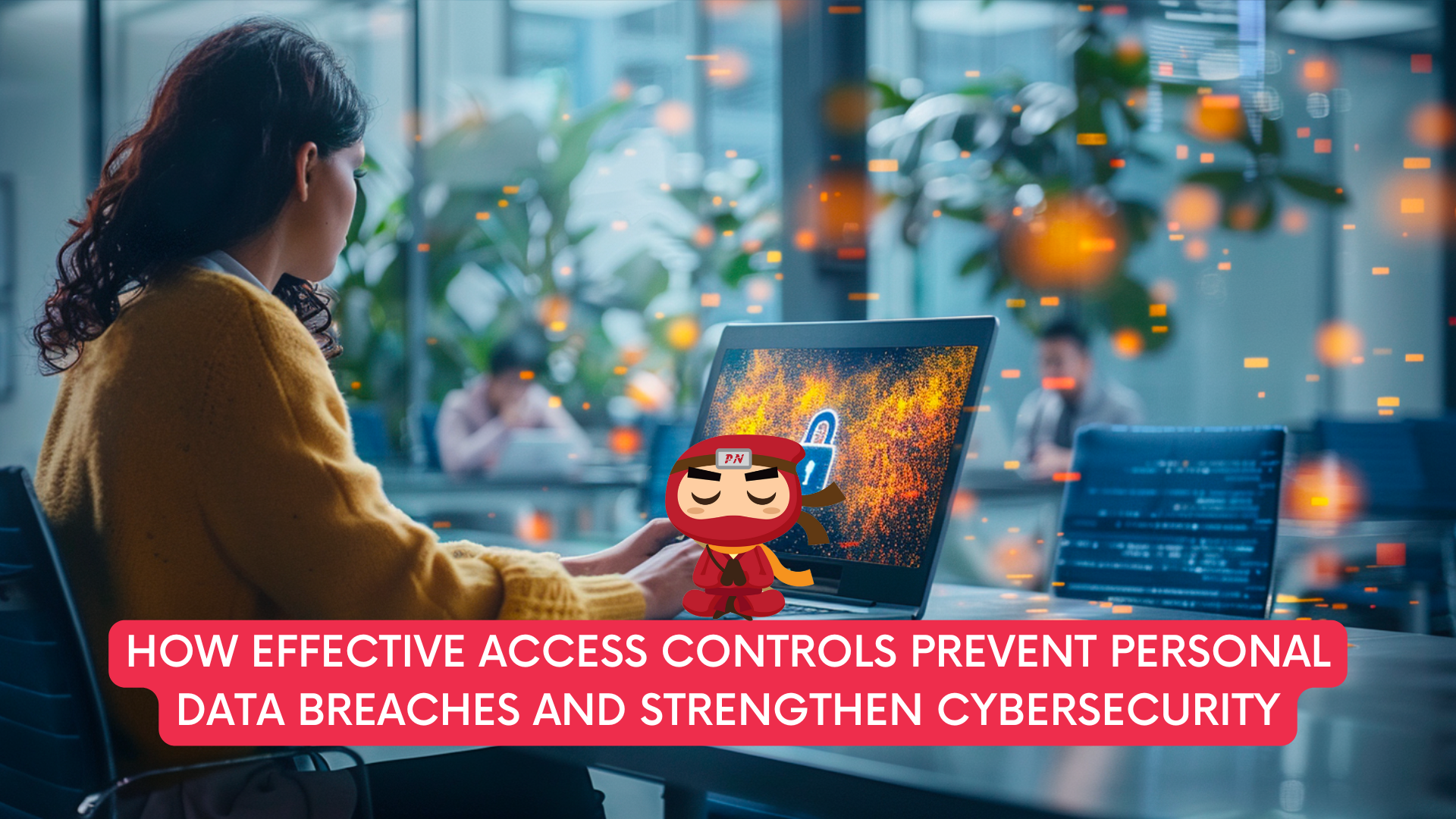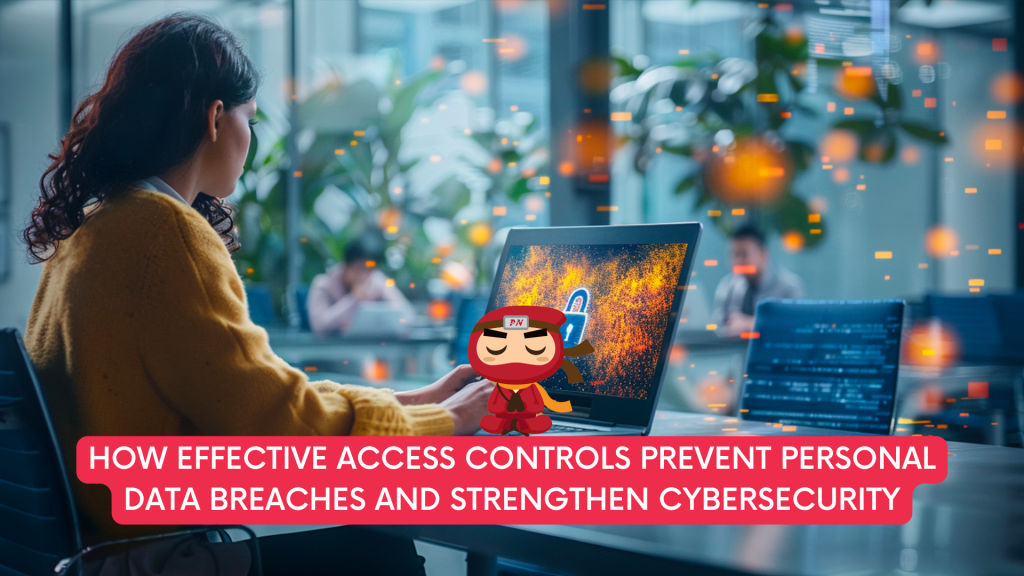KEEP IN TOUCH
Subscribe to our mailing list to get free tips on Data Protection and Cybersecurity updates weekly!







In today’s digital age, the protection of personal data is paramount. Organizations handle vast amounts of sensitive information, making them prime targets for cybercriminals. One of the most effective ways to safeguard this data is by implementing robust access controls. These protocols play a critical role in thwarting data breaches by establishing a foundation of security that limits unauthorized access and fortifies the organization’s overall cybersecurity posture.
Access control mechanisms are a cornerstone of information security, ensuring that only authorized users can access certain data, applications, and systems. By limiting exposure to unauthorized users, organizations can minimize the risk of data breaches, mitigate potential threats, and protect sensitive information. This article will explore the significance of effective access controls, how they prevent personal data breaches, and why they are essential to maintaining a secure infrastructure.
Access controls are security measures that regulate who can view, use, or modify resources in an organization. These measures are enforced through policies, procedures, and technological solutions that ensure only authorized individuals or systems can access sensitive data and assets. Access control systems authenticate users and grant permissions based on predefined rules.

There are several types of access control models, including:
No matter which model is employed, effective access controls ensure that only the right individuals or systems can access critical data, thereby minimizing the chances of unauthorized access and potential breaches.
Data breaches are a significant concern for any organization handling personal information. Whether it’s employee records, customer data, or proprietary information, personal data is valuable and must be protected from unauthorized access. Implementing access controls is one of the most reliable methods to prevent breaches and ensure compliance with data protection regulations.
Here’s how effective access controls help in preventing personal data breaches:
The primary purpose of access controls is to restrict who can access personal data. By ensuring that only authorized personnel can view or modify sensitive information, organizations reduce the risk of internal and external threats. For instance, if an attacker manages to breach an organization’s outer defenses, they will still be blocked from accessing personal data if they do not have the necessary permissions.
Access control mechanisms like multi-factor authentication (MFA) and biometrics add additional layers of security, making it even harder for unauthorized users to gain access. By enforcing strong authentication and authorization protocols, access controls ensure that data remains secure.

While external attackers pose a significant risk, insider threats are also a leading cause of data breaches. These threats can come from disgruntled employees, contractors, or third-party vendors with access to sensitive information. Implementing effective access controls limits the ability of insiders to misuse or exfiltrate personal data.
For example, an employee in the marketing department may not need access to customer financial information. By restricting access based on the principle of least privilege (granting users only the access necessary for their role), organizations can minimize the potential damage an insider can cause. Additionally, logging and monitoring access can help identify unusual patterns that might indicate malicious behavior from insiders.
Data protection regulations like the General Data Protection Regulation (GDPR), the Health Insurance Portability and Accountability Act (HIPAA), and the California Consumer Privacy Act (CCPA) require organizations to implement strict access controls. These regulations mandate that organizations protect personal data by ensuring only authorized individuals can access it.
Access control systems provide a clear audit trail, allowing organizations to demonstrate compliance with these laws. Auditable logs show who accessed data, when it was accessed, and what actions were taken. This level of accountability helps organizations maintain compliance and quickly address any potential violations.
In the event of a breach, having detailed logs from access controls can also assist in the forensic investigation process, helping security teams understand how the breach occurred and what specific data was compromised.
Access controls reduce the potential attack surface by limiting the number of entry points for cybercriminals. By segmenting data and controlling access, organizations make it more difficult for attackers to reach critical information. For example, if an attacker compromises a low-level account, they would not have access to sensitive systems or personal data unless they escalate privileges, which a well-implemented access control system would prevent.
Network segmentation, another form of access control, is a powerful tool for minimizing the impact of breaches. By isolating sensitive data and restricting access to it, even if a breach occurs, the attacker will be limited in what they can do. This strategy contains the damage and prevents further escalation, protecting the organization’s most valuable assets.
Effective access controls do more than just protect personal data. They form a critical part of an organization’s overall security architecture. By defining and enforcing clear rules around who can access what data, organizations ensure that their systems are resilient against various types of attacks.
For instance, access controls can be integrated with other security tools like intrusion detection systems (IDS) and security information and event management (SIEM) solutions. When combined, these tools provide a comprehensive approach to threat detection and response, allowing organizations to quickly identify and neutralize potential threats before they cause damage.
To fully leverage the benefits of access controls, organizations must implement them properly. Here are some key steps to take:
Organizations should begin by assessing who needs access to what data and systems. This involves a thorough review of roles, responsibilities, and the sensitivity of the data being handled. By understanding which employees need access to specific resources, organizations can ensure that permissions are tailored to each role.
The principle of least privilege is a security concept that restricts users’ access rights to the bare minimum they need to do their jobs. By limiting access in this way, organizations reduce the likelihood of misuse, whether intentional or accidental. Least privilege should be a guiding principle when configuring access controls.
Access needs evolve over time as employees change roles or leave the organization. Periodic reviews of access permissions are essential to ensure that access controls remain up to date. Outdated permissions can lead to unnecessary risk if former employees or vendors retain access to critical systems or data.
Access controls should be paired with strong authentication measures to ensure the right individuals are accessing systems. Multi-factor authentication (MFA) is a widely used solution that requires users to provide two or more forms of identification (e.g., a password and a fingerprint) before accessing sensitive data. This adds an extra layer of protection.
Continuous monitoring and auditing of access logs are essential to ensure that access controls are working as intended. By tracking who accesses what data and how often, organizations can detect anomalies that may indicate a potential breach or misuse of data.
Access controls are a fundamental aspect of cybersecurity that protect personal data and safeguard organizations from a wide range of threats. By limiting unauthorized access, minimizing insider risks, and ensuring compliance with data protection regulations, effective access controls play a vital role in preventing data breaches.
For organizations looking to strengthen their security posture, investing in strong, well-implemented access control measures is a critical step toward reducing risk, protecting sensitive data, and ensuring the long-term security of their systems and networks. In a world where cyberattacks are growing in frequency and sophistication, access controls offer a foundational layer of defense that can make all the difference in preventing a breach.
Your appointed DPO can work with you on your PDPA compliance, ensuring that there will be policies in place to make sure that the handling of personal data is PDPA compliant.
A Data Protection Officer (DPO) oversees data protection responsibilities and ensures that organisations comply with the Personal Data Protection Act (PDPA). Furthermore, every Organisation’s DPO should be able to curb any instances of PDPA noncompliance as it is the officer responsible for maintaining the positive posture of an organisation’s cybersecurity.
DPOs complement organisations’ efforts to ensure that the organisation’s methods of collecting personal data comply with the PDPA. It also ensures that policies are set in place to make sure that there will be no instances of data breaches in the future.
Don’t wait any longer to ensure your organisation is PDPA compliant. Take our free 3-minute PDPA Compliance Self-audit checklist now, the same “secret weapon” used by our clients to keep them on track. Upon completion, we will send you the results so you can take the necessary action to protect your customers’ data. Complete the free assessment checklist today and take the first step towards protecting your customers’ personal data.